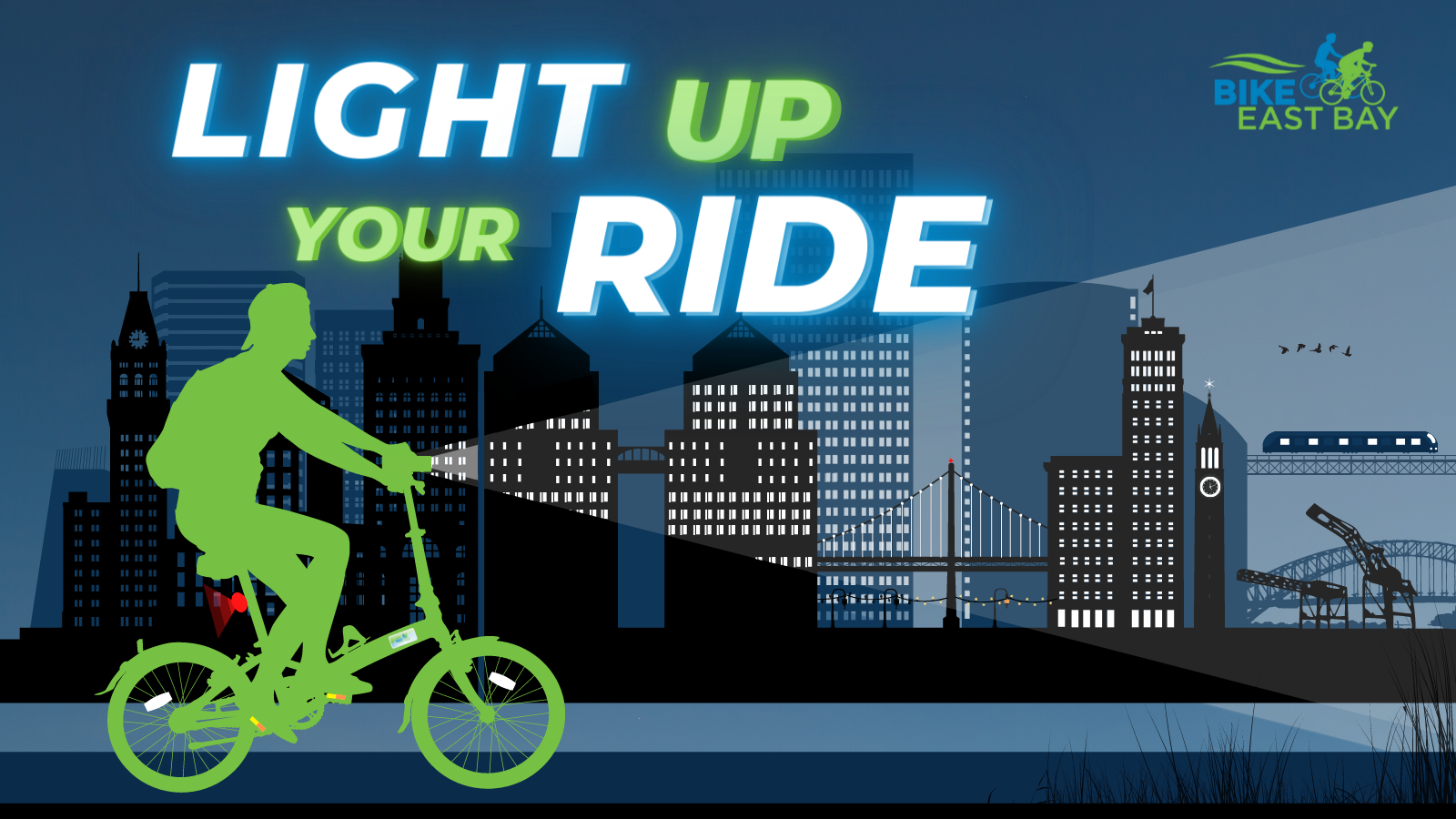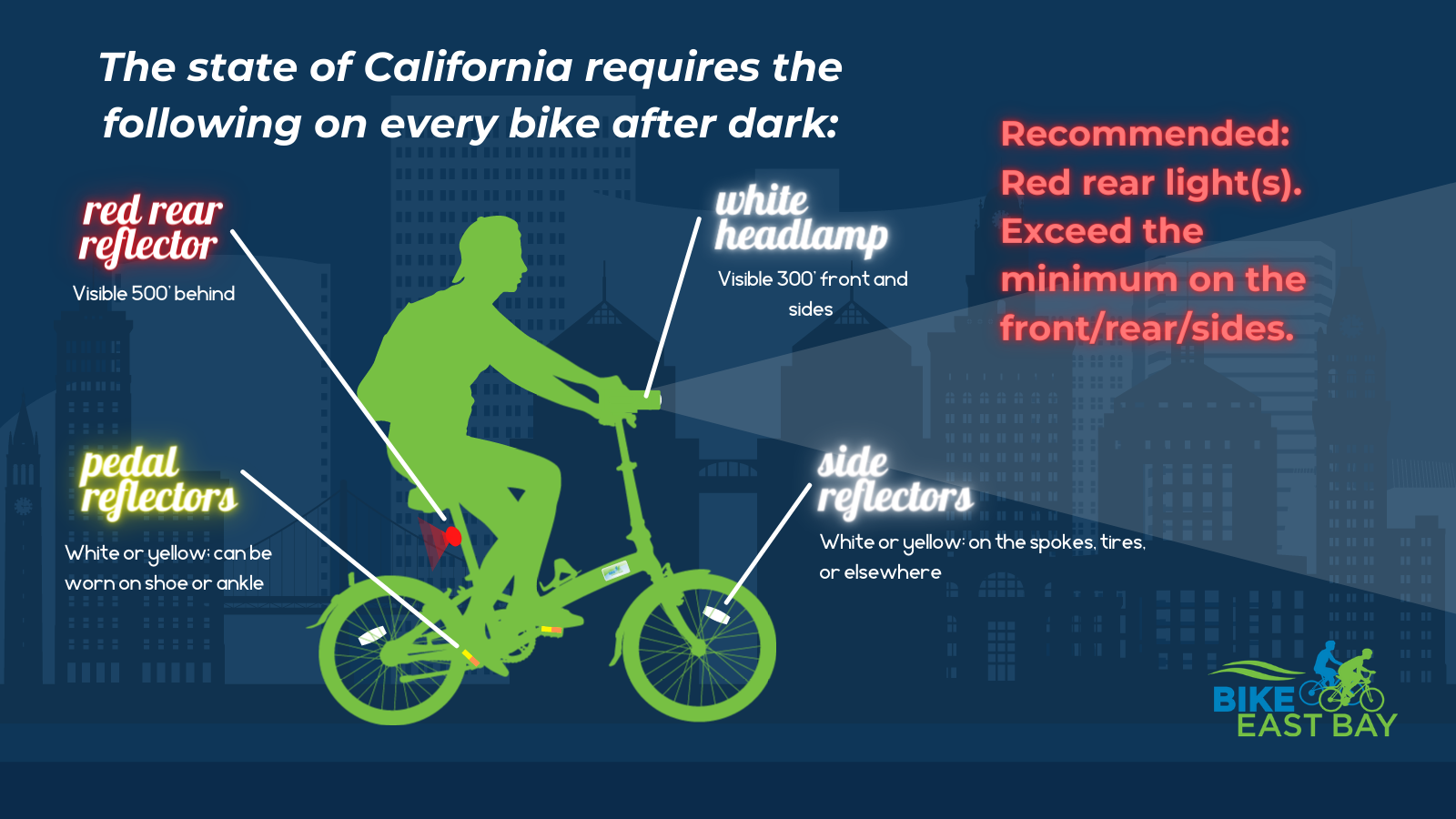night riding
A short guide to biking at night

HOW TO PREPARE
Biking after dark can be fun, but is important to plan ahead and make sure you always have the right equipment to be visible every time you get on your bike.
Requirements and Recommendations:
In the state of California, the vehicle code requires the following equipment on every bike after dark:
•A white, front headlight visible to both the front AND sides from 300 feet
•A red, rear reflector visible from 500 feet when in a car’s headlights
•A white or yellow reflector on each pedal, shoe, or ankle visible from 200 feet
•A white or yellow reflector on each side of the bike, both to the front and rear of center (usually spoke or tire reflectors)
However, most cyclists have figured out that these legal requirements don’t go far enough, and so the following additional items are also recommended:
•A red, rear light
•White reflectors on the front of the bike
•Lights or reflectors on one’s bike or clothing, especially on moving parts like legs, feet, wheels, cranks or pedals
•Lights or reflectors that highlight your silhouette, making you easier to recognize as a bicyclist
•A “slow moving vehicle” reflective triangle for the rear of your bike (especially useful on rural roads)

Dim Conditions:
This means that you can still see your surroundings without the aid of lights, but visibility is reduced. This can occur when riding at dawn or dusk, in foggy or rainy conditions, through a tunnel or overpass, or even under dense foliage. Some cyclists keep their lights on all the time, even during the day, as a dim environment can sometimes occur unexpectedly.
•Keep your front and rear lights on, especially when biking through fog
•High-visibility, fluorescent clothes help you stand out at a further distance
•Reflectors alone can be ineffective in these conditions, if drivers are not using their headlights
Dark Conditions:
After the sun goes down and the streetlights come on, this means you need to rely on lights and reflectors to stay visible.
•A combination of lights and reflectors can be used to the front, rear, AND sides of your bicycle. Reflectors can be seen from further away, but only when a headlight is pointing at them. Lights can be seen from any angle
•Fluorescent colors lose their effectiveness at night, but high-visibility clothing often includes some reflective details as well
•Put your front light on solid/steady mode and angle it downward a bit so you can illuminate potholes or other obstacles in the roadway
Luckily, over the last few years bike lights have become increasingly brighter, lighter, and less expensive, so even if you already have an older light an upgrade might be a good idea. That being said, the flash/blink/strobe modes on lights are all that much brighter and more distracting too, so we recommend using flash mode only during the daytime and keeping your lights on solid mode after dark.
Lights that are either rechargeable by USB or have easily replaceable AA or AAA batteries are recommended for city riding, as they are usually simple to remove and take with you when you lock up your bike, avoiding theft. With a USB light you will never have to worry about buying batteries, but with a replaceable battery light you can at least run to the store for extras if you suddenly find yourself out of juice.
A recommended solution is to equip your bike with multiple front and multiple rear lights, or to always pack extra batteries, so that if one light goes out unexpectedly you don’t have to finish your ride in the dark.



